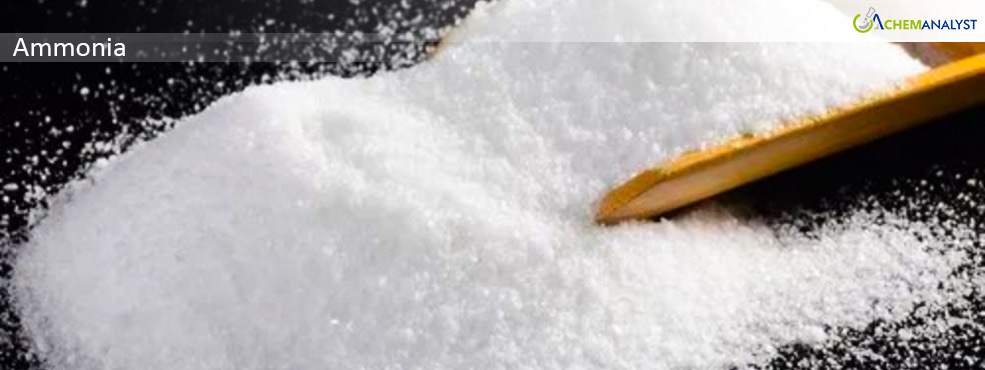Welcome To ChemAnalyst

The global Ammonia market maintained an upward trajectory in the week ending November 8. It was primarily driven by supply constraints and rising demand. As the winter planting season approaches in many countries, coupled with fluctuations in the price of key feedstock, natural gas, amidst ongoing geopolitical tensions, the cost of Ammonia has seen a notable increase. These factors have prompted higher production rates, further intensifying the upward pressure on Ammonia prices.
In the Middle East, Ammonia prices experienced a 1.2% increase during the week ending November 8, following a period of stagnation. This increase is largely attributed to a notable 3.3% rise in natural gas prices during the same week. It was majorly attributed to Russia-Ukraine war induced high power generation demand. The price surge was further intensified by a decline in Ammonia production at Saudi Arabia's Ma’aden, the region's leading producer, due to operational disruptions. With the company's forecasted production target revised down by 6%, the reduction in export availability, coupled with strong demand for Ammonia-based fertilizers in India, has placed additional strain on supply.
The ongoing agricultural planting season in key importing countries, including India, has intensified Ammonia demand. Saudi producers like Sabic Agri-Nutrients and Ma’aden are focusing on fulfilling long-term contracts. The companies are focusing more on stability in their supply chain, rather than engaging in spot market transactions. Our market experts predict a moderate uptick in prices in the coming months due to these supply-demand imbalances.
The European market also witnessed a rise in Ammonia prices, with the Netherlands being particularly affected. This increase was primarily driven by a significant operational disruption at Algeria’s Fertial plant, a critical supplier to the Dutch market, which led to restricted imports and compelled traders to seek supplies on the spot market, pushing prices higher. Additionally, alternative suppliers leveraged the increased demand by raising their prices. The situation was further aggravated by the shutdown of a key gas platform in Norway, leading to higher feedstock Natural Gas costs, which directly impacted Ammonia production and export pricing. While overall demand across the region has remained steady, a seasonal uptick in the Northeastern region, spurred by agricultural requirements for winter planting, has intensified pressure on prices.
Similarly, in North America, Ammonia prices rose by 1% during the review week, driven primarily by significant logistical challenges. Prolonged labor strikes in Canada, coupled with adverse weather events such as hurricanes, have severely disrupted supply chains, causing delays in Ammonia shipments. These disruptions have also forced several U.S. production facilities to operate at reduced capacity, further constraining supply. These combined factors have contributed to upward pressure on Ammonia prices in the region. This has worsened the supply shortage, even as demand from industrial applications remains firm. However, fertilizer demand has softened due to a quiet agricultural season. This mixed demand has led to a widening gap between supply and demand, placing upward pressure on prices.
As per ChemAnalyst experts it is anticipated that the Ammonia prices may rise in the global market. As procurement activities intensify, industry analysts anticipate that Ammonia prices will continue to exhibit volatility through the first quarter of 2025.
We use cookies to deliver the best possible experience on our website. To learn more, visit our Privacy Policy. By continuing to use this site or by closing this box, you consent to our use of cookies. More info.
